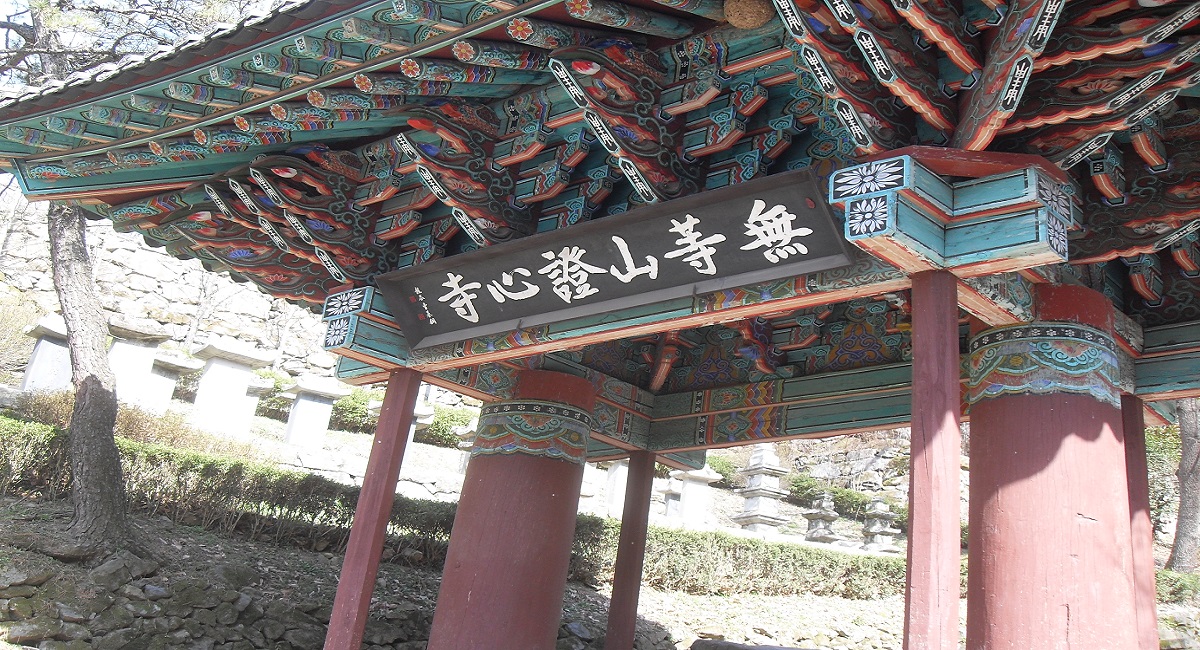1 Introduction to Jeungsimsa Temple.
Thank you for reading this post, don't forget to subscribe!Jeungsimsa is a representative Buddhist temple in the Gwangju area, located on the west side of Mudeungsan Mountain.
It is a temple belonging to Songgwangsa, the headquarters of the 21st district of the Jogye Order of Korean Buddhism.
It is a temple built during the Unified Silla period, and has experienced many wars and fires, and has survived to the present day.
Relics remaining in Sajal include the Seated Iron Vairocana Buddha (Treasure) enshrined in Obaekjeon and Birojeon (Saseongjeon), the Three-story Stone Pagoda of Jeungsimsa (Local Tangible Cultural Property), the Bell Tower, and the Seven-story Stone Pagoda with Sanskrit characters engraved on each of the four sides of each floor, as well as numerous other cultural assets. In particular, O Baek-jeon is the oldest remaining temple building in Mudeungsan, dating from the early Joseon Dynasty (the 25th year of King Sejong’s reign). It is a rare temple with a three-bay front and three-bay side, single-story gable roof, and a multi-layered roof style, similar to the Geukrak-jeon of Muwisa Temple in Gangjin.
It was designated as a Gwangju Cultural Heritage Material on November 1, 1986.
Various temple stays are actively operated and there are various experience programs.
It is located on the Mudeungsan hiking course representing Gwangju. Nearby are Hak-dong and Jeungsimsa Stations on Gwangju Subway Line 1 and several bus terminals.
It has many cultural properties, including Treasure No. 131, the Iron Seated Vairocana Buddha, and is famous for temple stays.
2 Tourist tips when visiting
Gwangju is a very meaningful city for democracy in Korea. On May 18, 1980, there was a civil uprising against the military dictatorship, and there was much damage.
The mountain that surrounds this city is Mudeungsan, and Jeungsimsa Temple is at the entrance of the hiking trail.
Therefore, to climb Mudeungsan, it is common to take the Jeonjeol and get off at the station and go through Jeungsimsa Temple.
Mudeungsan is famous for watermelons, and it is a mountain where you can see various scenery such as Seoseokdae and Ipseokdae.
All temples in Korea are old, and monks also live there, worshiping Buddha, studying, and practicing the Way.
Here, it is good to have a cup of tea with the chief monk and chat, and it is also good to apply for a temple stay to purify the tired village from the city and have a peaceful mind.
3 How to get to Jeungsimsa Temple.
- Address: 177 Jeungsimsa-gil, Dong-gu, Gwangju Metropolitan City
- Business hours: Operating hours: Operating hours end at 17:00
- Website: http://www.jeungsimsa.org/
- Phone: 062-226-0108
- Closed days: Open year-round
- Disabled restrooms available_Accessible facilities
4 Map
5 The scenery of Jeungsimsa Temple.






6 Link to concern place in Korea
How to get there (transportation)
Recommended accommodations
Famous restaurants
Other nearby tourist destinations
Discover more from Creative Innovator in Korea
Subscribe to get the latest posts sent to your email.
